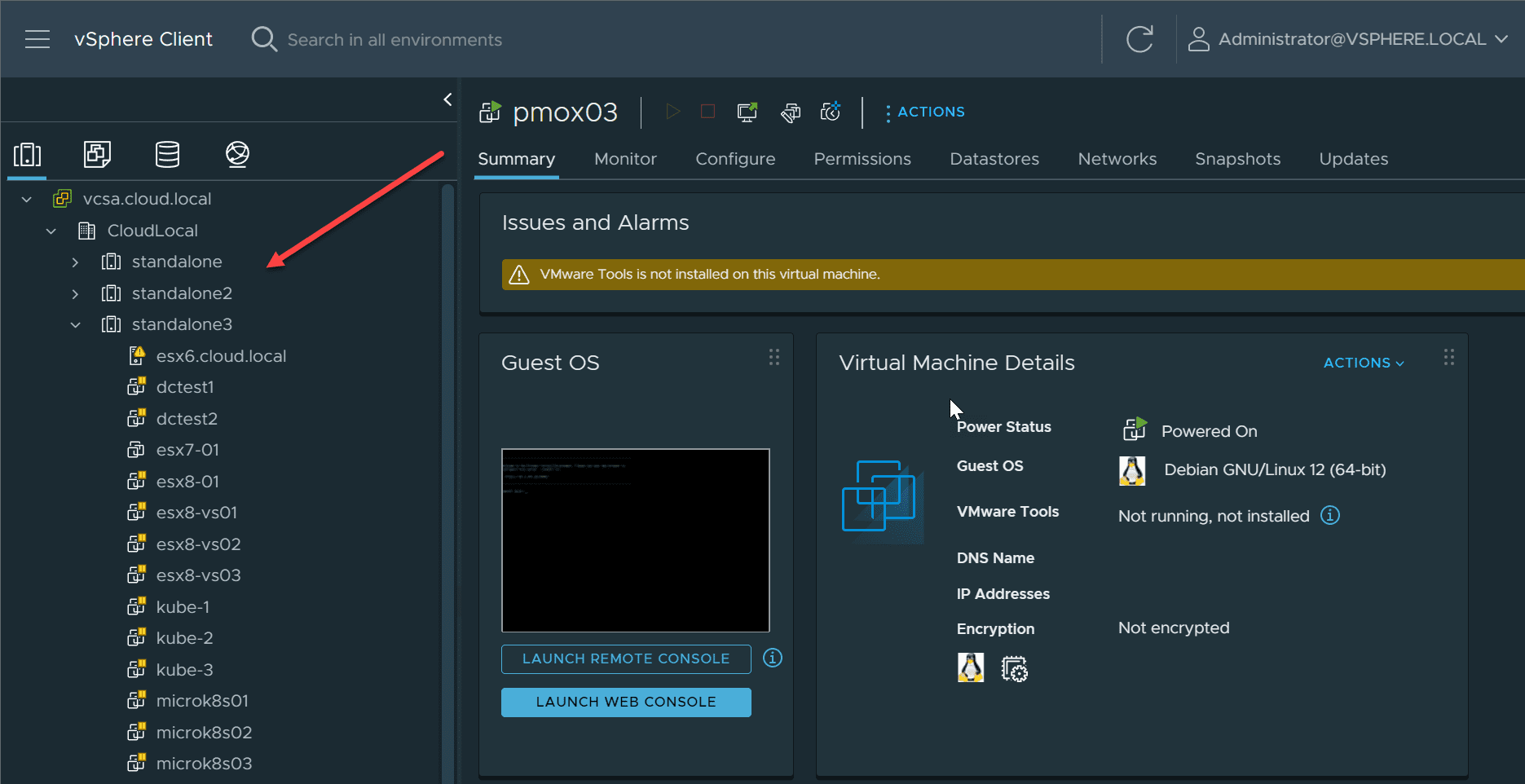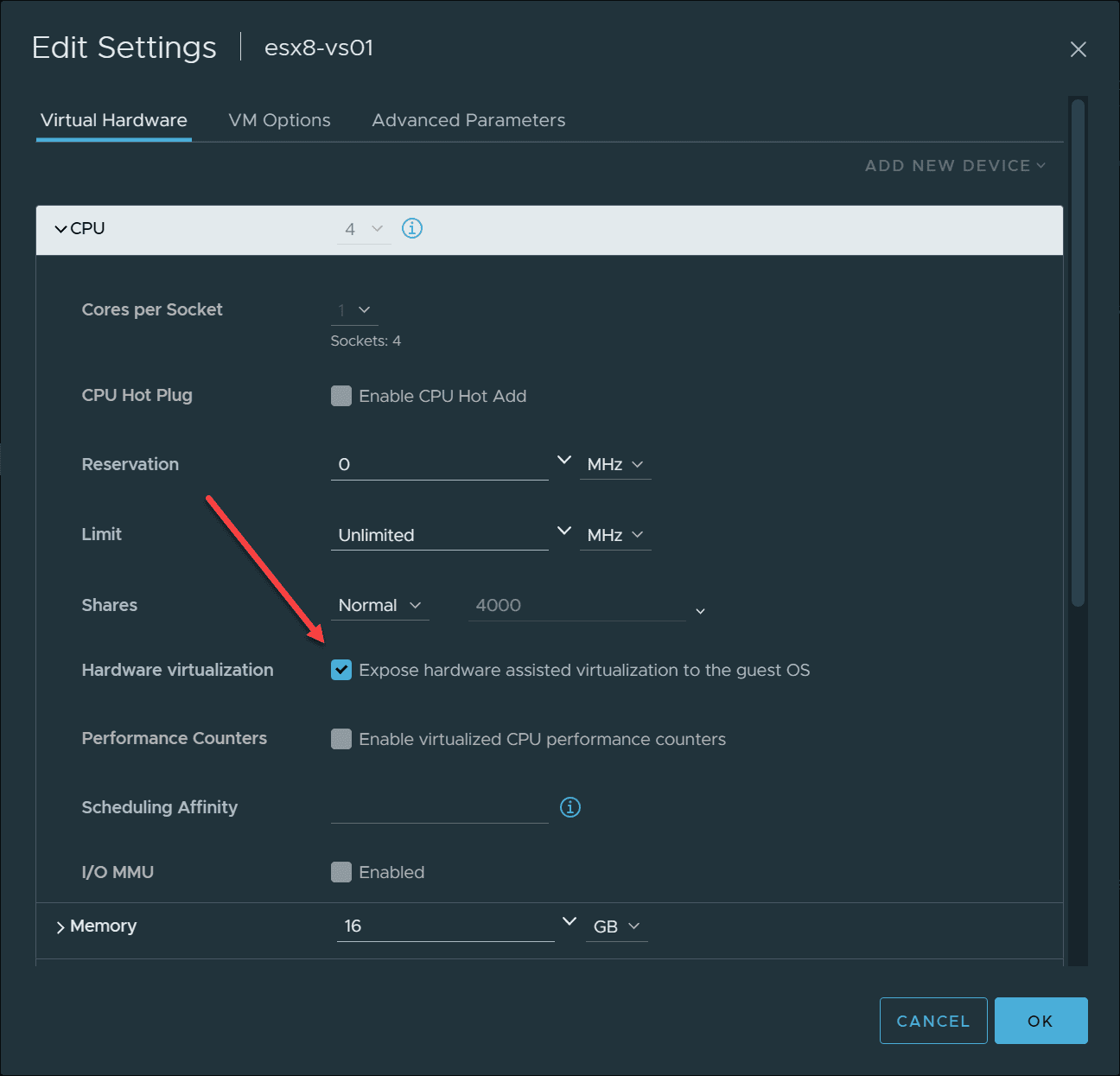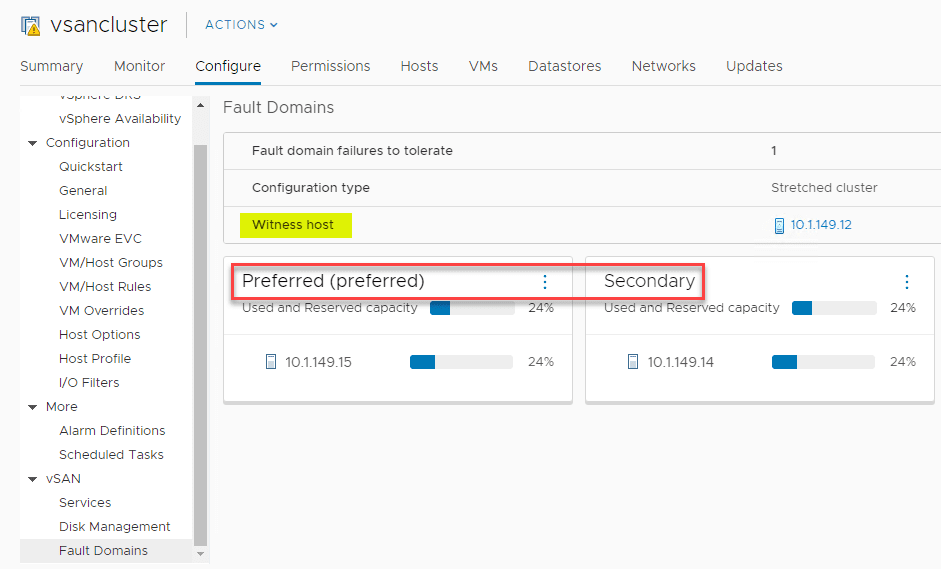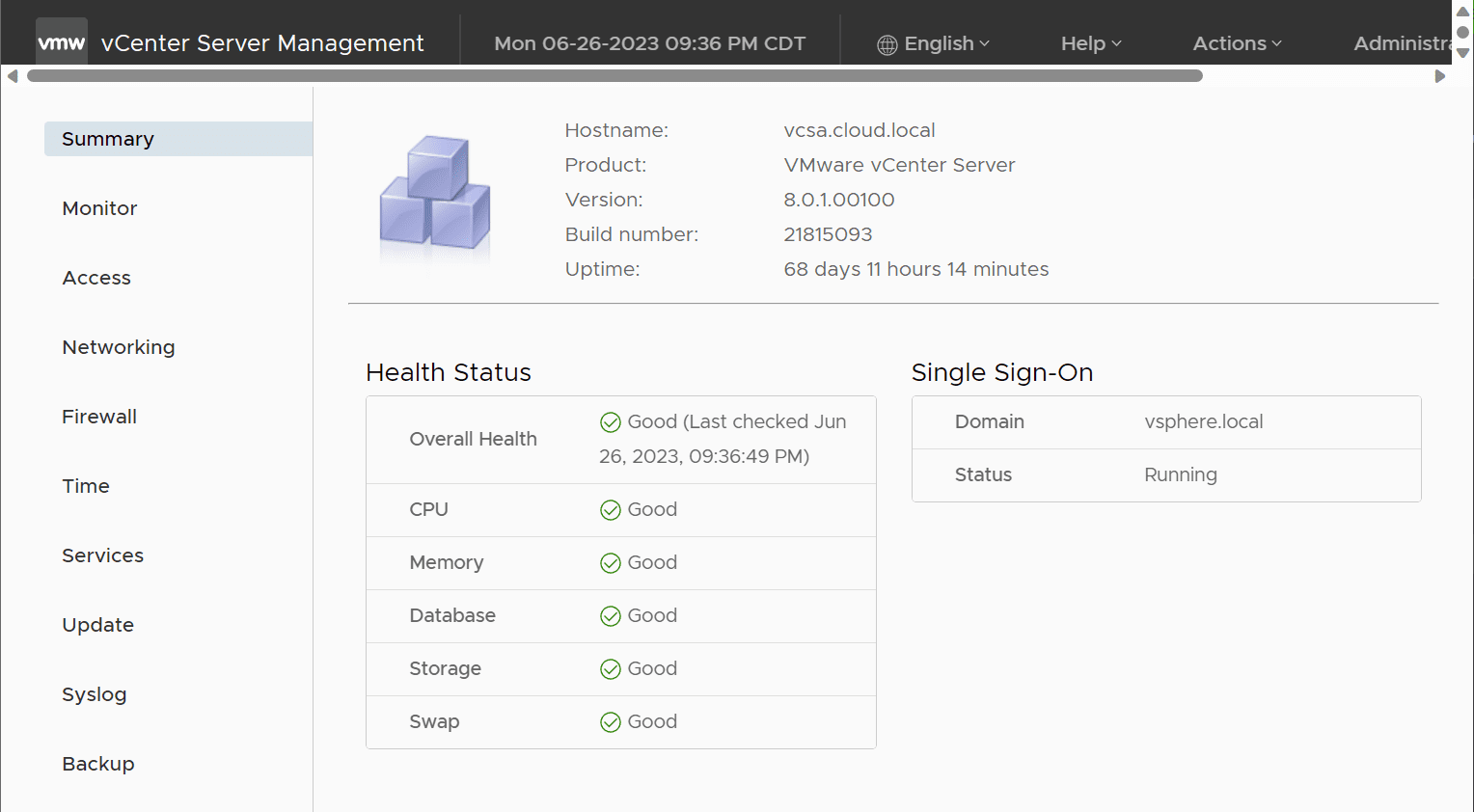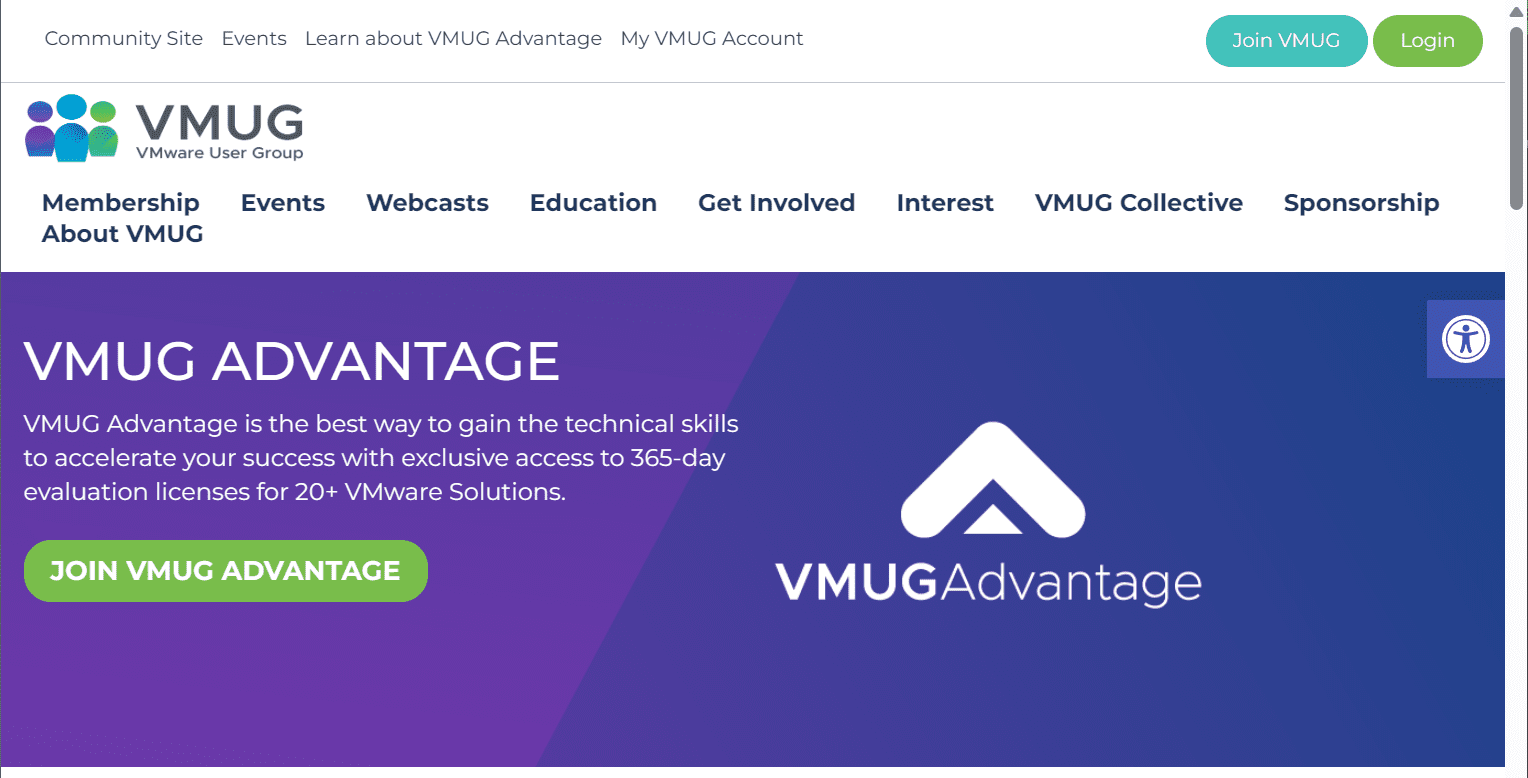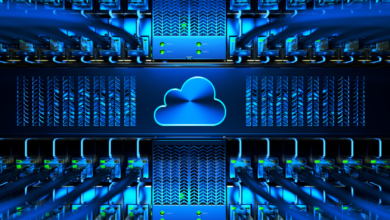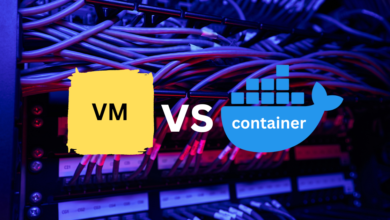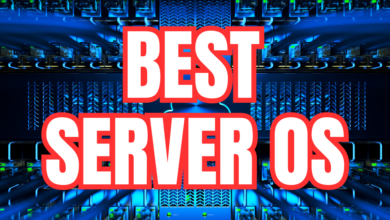Top VMware Home Lab Configurations in 2023

In 2023, many great options exist for delving into a home lab. Many get into running a home server to learn more skills for their day job, or they like to tinker and play around with technology as a hobby. For many, it is a mix of both. VMware vSphere is the market leader hypervisor in the enterprise. It arguably provides the most features and capabilities of any hypervisor on the market. This post will look at the top VMware home lab configurations in 2023 and see which options may be a good fit for starting a home lab using VMware technologies.
Table of contents
Top 5 VMware Home Lab Configurations
Let’s explore the top five VMware home lab configurations you can build in 2023, focusing on their setup, uses, and benefits.
1. VMware Workstation
VMware Workstation is an excellent choice for your first experience with a home lab and running virtual machines. It is an ideal starting point for those who want to learn the ropes without investing heavily in hardware or for those who want to run a small number of VMs. You can even dual-purpose a workstation for a home lab and your productivity machine. This is the solution I started with.
You’ll need a physical machine with a compatible OS and enough resources to install VMware Workstation and run a few VMs. The process is straightforward; once you have installed it, you can create your first VM using the new virtual machine wizard.
You can customize the virtual machine hardware compatibility, select store virtual disk as a single file or multiple files, and much more.
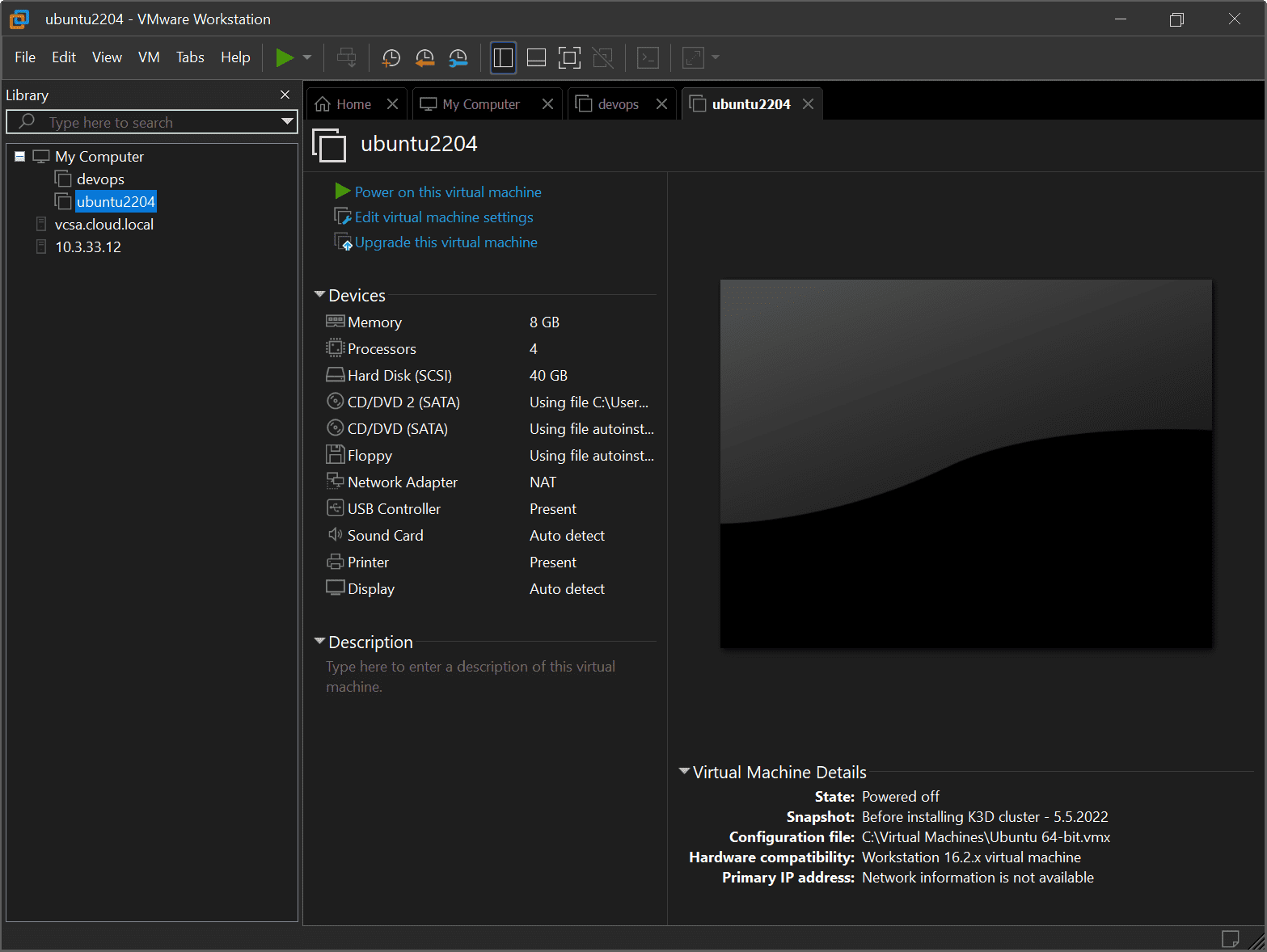
Pros:
Easy to set up and use, ideal for beginners
No significant hardware investment required
Ability to run multiple different operating systems simultaneously
Can also run nested virtualization
Cons:
Limited scale, not suitable for simulating large environments.
Performance depends on the host system’s resources.
2. Single ESXi Host with Local Storage
To mimic a production environment more closely, consider setting up a single ESXi host with local storage. This configuration requires a physical server (or a high-end workstation), compatible with the VMware HCL. An SSD for ESXi installation and additional storage devices for VM files are recommended for local storage.
You can install ESXi directly on your server hardware and manage it using the VMware vSphere client. You can then create virtual machines on the ESXi host, leveraging its compute and storage resources.
Although this configuration doesn’t provide shared storage or high availability, it’s an excellent way to learn about VMware ESXi, vSphere, and basic VM operations.
Below is a look at one of my vSphere environments where several standalone hosts are running connected to a vCenter Server.
Pros:
Provides a closer experience to a production environment compared to VMware Workstation
Greater capacity for running VMs compared to VMware Workstation
Offers exposure to ESXi and vSphere
Cons:
Requires more significant hardware investment
No high availability or shared storage
3. Nested Virtualization
Nested virtualization is running a virtual machine inside another virtual machine. This can be accomplished in a VMware home lab by running ESXi VMs (nested ESXi) on a physical ESXi host or within a VMware Workstation. However, you can also run Proxmox servers, KVM, Hyper-V, and other hypervisors as nested virtual machines with VMware. I leverage this for much of my testing.
This configuration is a powerful tool for testing advanced VMware features, such as vCenter Server, vSAN, or High Availability, without needing a lot of physical hardware.
It also allows you to experiment with different virtual networks, testing how they interact with each other within a contained, controlled environment.
Enabling nested virtualization in VMware ESXi for a virtual machine is a simple checkbox.
Pros:
Allows testing of advanced VMware features without significant physical hardware
Excellent for experimenting with complex virtual network setups
Allows using snapshots on nested VMs running hypervisor hosts, allowing you to easily roll back entire labs and configurations
Cons:
Networking configuration and concepts can be more difficult in nested configurations
Performance may not be as high as with physical hardware
4. Two-node vSAN Cluster
Before we delve into the two-node vSAN cluster in this section and the 3-node configuration in the following section, what is VMware vSAN? VMware vSAN creates a logical shared datastore between multiple hosts using locally attached disks. VMware vSAN is object storage and provides many features for protecting your data and achieving great performance out of your locally attached storage.
Two-node vSAN
If you have two physical servers or high-end workstations, you can set up a two-node vSAN cluster. Each server runs ESXi in this setup and contributes local storage to a shared vSAN datastore. VMware vSAN eliminates the need for external storage, as it creates a shared datastore from the local disks of the ESXi hosts.
This setup allows you to experience the advantages of shared storage, like VM migration, without needing an expensive SAN or NAS. The two-node vSAN cluster configuration also introduces you to advanced vSphere features, such as High Availability and vMotion.
Two-node vSAN also requires using a “witness node,” a nested virtual machine (running ESXi), deployed in your vSphere environment. You can run this appliance on your two-node cluster for home labs, although you would never want to do this for production environments.
Below you can see a two-node vSAN environment and configuring the preferred and secondary fault domains.
Pros:
Offers shared storage benefits without external SAN or NAS
Introduces you to vSAN, High Availability, and vMotion
Cons:
Requires two servers or high-end workstations
It also requires a witness node that can be run as a virtual machine
Limited redundancy compared to a three-node cluster
5. Three-node vSAN or Traditional Shared Storage Cluster
A three-node vSAN or traditional shared storage cluster is the way to go for a more advanced VMware home lab configuration. This configuration requires three physical servers, each running ESXi. For a vSAN setup, each server will contribute local storage to the shared vSAN datastore.
In a traditional shared storage setup, you will need an additional device for shared storage, like a NAS or an iSCSI server. The ESXi servers will access the shared storage through the iSCSI software adapter or other storage protocols like NFS.
You can then deploy vCenter Server and build a high-availability cluster, leveraging vSphere features like vMotion, Storage vMotion, and Distributed Resource Scheduler (DRS).
The three-node configuration provides a robust, resilient virtual environment mimicking a production environment. It offers extensive hands-on experience with almost all VMware vSphere features, preparing you for managing enterprise-grade virtual infrastructure.
Below is an example of a three-node VMware vSphere cluster.
Pros:
Mimics a production environment closely
It provides a robust, resilient virtual environment
Allows extensive hands-on experience with almost all VMware vSphere features
Allow learning about networking concepts and configuration of both virtual and physical network gear
Cons:
Requires substantial investment in hardware
Complexity can be daunting for beginners
Requires external device for shared storage in a traditional shared storage setup
Requires a network switch for storage traffic which is an additional investment
More power consumption
More heat
Run VMware vCenter Server or Not?
Deploying vCenter Server in your VMware home lab is not a strict necessity, but it opens up many advanced features and streamlined management that most find useful
Benefits of Running vCenter Server
vCenter Server allows centralized management of your ESXi hosts and virtual machines. Here are some reasons why you might want to include vCenter Server in your VMware home lab:
Cluster Management: With vCenter Server, you can create and manage clusters of ESXi hosts. This is crucial if you’re planning to experiment with clusters in your lab, whether it’s a two-node vSAN cluster or a three-node shared storage cluster.
High Availability and Fault Tolerance: vCenter Server unlocks these vSphere features, which provide automatic failover and continuous availability for your VMs, mimicking a production environment.
vMotion and Storage vMotion: These features allow you to migrate running VMs from one host to another (vMotion) or move a VM’s disk files while it’s running (Storage vMotion).
Resource Management: vCenter Server offers advanced features like Distributed Resource Scheduler (DRS) and Storage DRS, which automatically balance resources across your environment.
Considerations for Not Running vCenter Server
If you’re starting out with your VMware home lab, running a vCenter Server might not be necessary. Here are a few reasons why:
Simplicity: ESXi hosts can be managed individually using the vSphere Client. This is more than adequate for basic setups like single host configurations or when you’re just beginning your virtualization journey.
Resource Consumption: vCenter Server requires significant resources to run effectively. This might not be ideal if you’re trying to conserve resources in your home lab.
Cost: Although you can obtain licenses through VMUG Advantage, running vCenter Server outside of this context can be expensive.
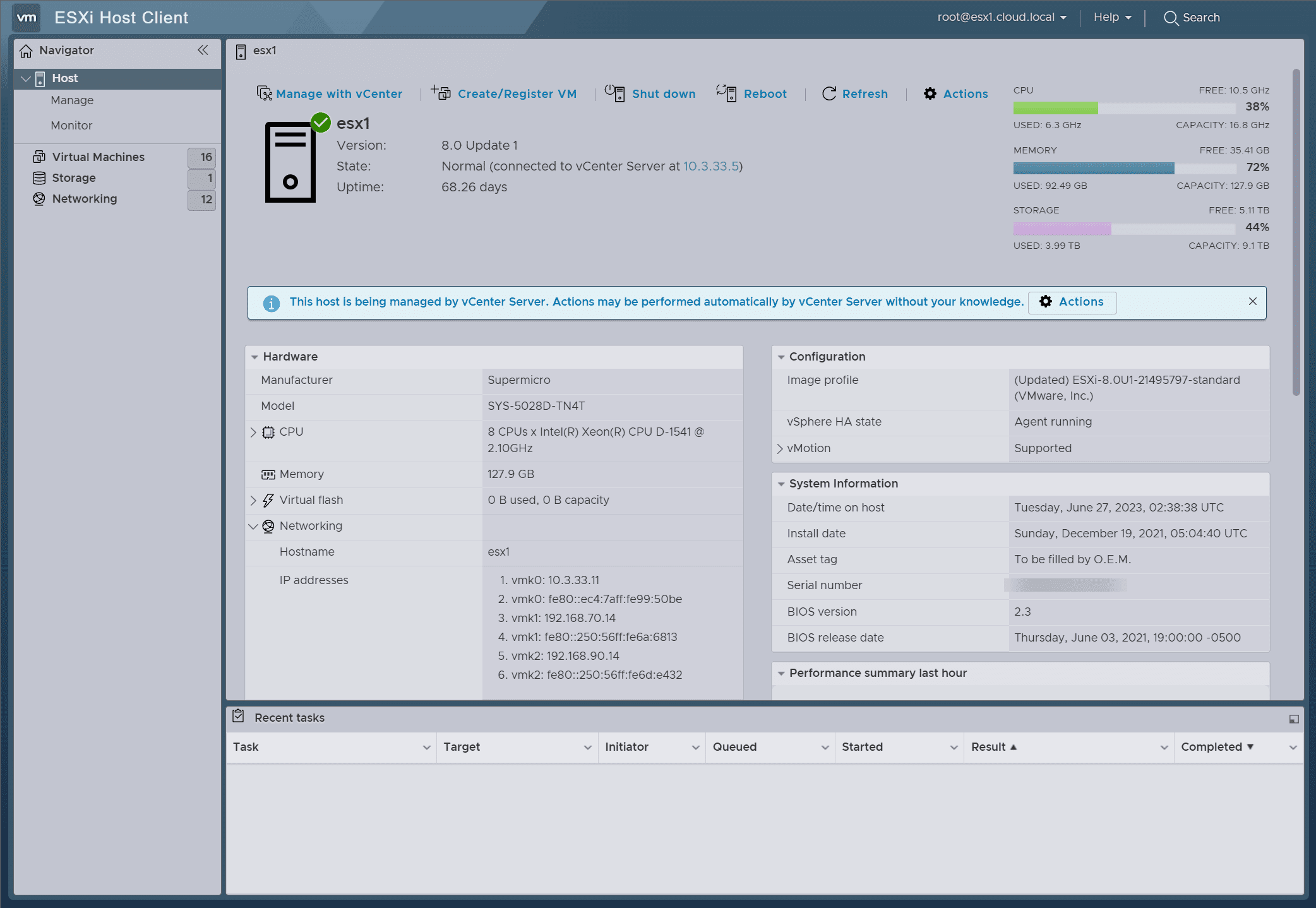
Deciding whether to run vCenter Server in your home lab will depend on your individual learning goals, resources, and the scale of your lab. While vCenter Server provides many advanced features, it’s not required to start learning and experimenting with VMware.
Use VMUG Advantage Licensing
The VMware User Group (VMUG) Advantage membership is an excellent resource for those embarking on their VMware home lab journey. VMUG Advantage provides members with a range of benefits for an annual subscription fee, including the EVALExperience license.
EVALExperience provides members with a 365-day license to most VMware products, which is invaluable when building a VMware home lab. I have often said this is one of the best values in the entire home lab ecosystem. Having access to licensed VMware products allows you to explore advanced features, which are often not available in the free versions.
Some of the included products are VMware vSphere, vSAN, and vCenter Server, which can power advanced lab configurations.
To make use of the VMUG Advantage licensing, follow these steps:
Join VMUG and subscribe to the Advantage membership.
Once subscribed, log into your VMUG account.
Navigate to the EVALExperience page and click on the license keys you wish to use.
These keys can be entered into the respective VMware products during installation or through the VMware vSphere Client.
It’s important to remember that VMUG Advantage licensing is intended for individual use, such as home labs or personal study. It should not be used in a production environment.
To stay updated with VMware news, best practices, and connect with other VMware enthusiasts, participating in the VMUG community can be an enriching experience.
This membership also grants you discounts on training, exam vouchers, and VMware events, which can benefit your continuous learning journey.
Wrapping up
We have considered what I feel are the top options for building a VMware home lab in 2023. These lab configurations provide flexibility and potential growth from personal development, hands-on learning, experimentation, and testing.
You can start your journey in the virtual world with VMware Workstation and gradually progress through more advanced setups like a two-node vSAN cluster or even a three-node vSAN or traditional shared storage cluster.
Ultimately, your configuration will depend on your objectives, resources, and the extent of your current VMware home lab. Whichever path you take, each lab will likely be a snowflake for each individual, which is great as it allows customizing the configuration to suit your needs and learning goals.


